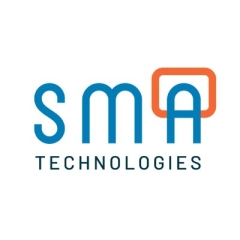What is our primary use case?
We are an in-house Fiserv Premier bank. This solution allows us to automate a lot of the core processing.
How has it helped my organization?
This is outside a bit of the day-to-day. We recently did a branch acquisition of another bank, though not a full bank. With that, we had to convert all of their ACH transactions. It was a very complicated product that we received from our core provider, Fiserv, for some translation programs. It was very cumbersome to run through the process, convert it out, get output files, etc. Without anyone touching it, I was able to automate the full process from pulling in the files from this other bank, converting everything needed, and posting it to our customer's account 24-hours throughout the day.
We run the ACH process around the Fed window about four times a day: 2:00 am, 10:00 am, 2:00 pm, and 7:00 pm. We are not staffed all those hours. If someone were to actually run through all those steps, it would take maybe 15 minutes per each file. This is if someone were to manually do it. So, that adds up. The main thing is we can let it run at two in the morning without staff. It of course ran in less than 10 minutes, since it was automated.
The product allows our full-time employees to be repurposed, not eliminated. We turn ourselves from operators who used do everything to reacting or being proactive.
We have a night operator whose whole evening was just initiating, running everything, and watching it. My predecessor and I have been doing a staggered approach, taking these tasks out of the night operator's hands and putting them into OpCon. This still gives her the control where she can initiate via the Self Service portal. Now, we're hitting that phase where I can start to let it run on its own. She's become more reactive with the handful of things that she's still doing.
Our night operator loves it. Granted, she is one of those people who is always up for change and improving things. The way that she used to run things in the IBM mainframe was more isolated. She would see the output as a whole: That process A and process B were running, but she didn't actually know the details. With OpCon, she likes to have it up to watch it (not that you have to have someone watch it closely). She uses OpCon because it is easier for her to troubleshoot if something were to come up by seeing where things are at, what step it is on, and observing colors change.
The team members' reaction to the change has all been positive. Everyone has a different feel for it, but everyone sees the positive. I do my best to put a positive spin on it. It's not so much taking anything away from anyone. It's just converting it into OpCon, running it, then determining, "Is intervention needed? Can it run on its own?"
What is most valuable?
Anything that is file movement related is awesome. Whether you are outsourced or an on-prem in-house bank (like us), you're not just fully in-house anymore. There are so many different third-parties that you work with now. With the amount of files going back and forth between end users or simply from the core to different vendors, this is the best part about the solution, streamlining and letting it run. Whether that's constantly throughout the day, certain times of the day or month, or a specific 16th day of the month, that's probably the most helpful because there is no operator that you have to wait on. We can just push it through a traditional FTP or SMTP.
It's very helpful, as we can move quite a few files all at the same time from a server level instead of having someone at their workstation downloading a 100 files. E.g., I created a process with our recent branch acquisition that we did early last year, where files were moving between the acquiring bank (us) and the selling bank. I put on our Self Service portal buttons for execution, that said, "As file's become available..." Then, my conversion team could have access without waiting on me to pull in stuff. If they knew that the selling bank put out some large conversion files, they can go out and simply hit a button. It would go out, grab it, and in a matter of minutes, be available to them on our public shared drive versus trying to pull that down via a secure site.
What needs improvement?
The solution is what you want out of it. It's not something you can just quickly grab, try, run, and play with. You have to get the knowledge and train yourself. It was easy for me, but I also took the time to throw myself into it. There is a learning curve to a certain extent. You have to learn the rules. There are so many different ways that you can do things in it. If you were to survey five of my peers and me, I'm sure we all work on it differently. There is no one outcome of it. This is not to say that you can't pick it up out-of-the-box, but the way SMA trains you is on their standards of using it. You have to know the concepts of it, the different terms, and how you apply things. If you are using Windows, patch scripts, or mainframe things, it's not always an apples to apples thing. There's a bit of different translation into the product.
There is a current way to help hone in on detail that you are trying to visually show. For example, they have an add-in product (Vision) that we haven't purchased. The way the add-in product works is taking tagged data and categorizing it into a tiled report view. It's actually live and constantly updating. I like the visual / workflow side of OpCon, since I take the time to make it viewable from a visual standpoint. Right now, I have a hard time if I want to translate what I'm doing to show folks who aren't users an overview. While I know SMA has an option for this, it's just more data. How can I show everything without my CIO needing to login to OpCcon and having me showing him the flowchart? A different way to report visually for other people to see processes would be my only improvement.
I would like to see more connectors to other various things. However, this has more to do with other vendors holding back with their applications.
Custom Templates for common jobs. I do a lot of copying and pasting for jobs, that it would be easier if I could have my own templates. Also Custom Documentation, that could flood to multiple job types vs. similar documentation on the same job being typed up.
For how long have I used the solution?
A little over two years now.
What do I think about the stability of the solution?
The stability is good. The only time we've ever had an issue was simply due to internal system issues. For example, we recently had something where our SQL Server had connection issue. All systems were down. I've never (knock on wood) had an issue with any of the agents or application itself.
What do I think about the scalability of the solution?
70 percent of our manual day-to-day processes have been automated by OpCon. 30 percent of the overall daily and nightly processing take more time to do. Taking individual processes that were standalone and putting them in was one thing, but then taking and tying them altogether is that 30 percent. Basically, if you're taking the human element out of it, you have to build it so you are comfortable with it and can rely on it. That is where the time comes into it. I'm very thorough. I go through it and make sure I can cover common outcomes. For example, "Is this going to make sense? What if this happened?" You build in all this stuff so the way you rely on it, you do not have to worry about it. Whereas, with that human element, they know what to do and where to jump around. Someone who is seasoned will know how to make decisions along the way, and you have to sort of program some of that in. This doesn't apply for everything, but in some cases, it does.
To get it expanded out to that additional 30 percent, it will probably be done in the next year with everything that is going on. Though, I would love to have it done in the next couple of months, but when an acquisition comes in, that is the priority.
I like going out throughout the entire bank and finding behind the scenes processes that other people are doing which we could help with. If it's just file movements, taking data that they are manipulating, moving things around, or simply just triggering a process, that is the fun side of my job. To sit down, look at a process, take it, and if I can, free up a quarter of someone's day by automating it, that is fun. Working with other departments in the bank, getting to learn a bit about their areas is a fun learning opportunity. Their tasks don't have to be automated either, it can be streamlined by giving them Self Service buttons. It is about making the task more efficient for the user.
The more things that are new and introduced in our environment, they go right into OpCon. It's more understanding, "How do does OpCon help us do that?" and, "Is there a tie in for it?"
The scalability is huge.
I am the primary who maintains it. There are also two other individuals who are in a similar role to me: my immediate supervisor and another colleague. They both have access. My supervisor just relies on me to train him as needed, then the other colleague is able to jump in and interpret a lot of my stuff. However, we're divided. He's in charge of this and I am in charge of that, but we do cross-train. Beyond that, there is a night operator. She is Tier 1 support. She can help react to job failures and work on smaller things. If it's above her, then she defers it to me.
There are three different departments who use the Self Service besides us. They don't use the automation side of it, though. They use the Self Service to run a process or generate something. This is mainly our accounting department. They are very tied into it, but they don't see the automation side of it. They just know that they need to push a button and things happens. Also, our item processing area and the conversion team use the Self Service.
How are customer service and technical support?
You have to put the effort into the training and learning. SMA is big on free training. They do monthly training down at their headquarter office. As long as you own the product, the only thing you pay for is your employees' travel expenses. The training is free. They are willing to train people and give them the knowledge. That way, you are equipped to do what you need to do. Then, obviously, they're available for support and assistance from there, but it's only for what you need above and beyond on that.
The technical support is good. I don't use it that often because they're very good about training you. It's more if I have a question, or something small comes up, then I can open a case. Otherwise, I have what they call blocks of hours. E.g., if I'm scratching my head or trying to think through how do I want to develop something? Then, I tap into my block of hours with a dedicated specialist who is assigned for our bank. It all depends on what's going on. If it's something brand new or different that I'm doing, then I'll touch base with them and run it by them. Otherwise, the block of support hours is mainly for upgrades and stuff like that.
Which solution did I use previously and why did I switch?
Before, we did use file transfer stuff, which was a bunch of "if" and "then" statements. We were executing with that. But, that was very limited to what the application could do. Whereas, OpCon is a whole different game changer of what you can do from an enterprise level.
As a bank, there used to be a lot of full-time employees who would just run checklists all day doing manual steps. Whereas, with this product, we can automate the full day to a certain extent. There is still some intervention or items that are more user driven. Instead of our operators running the day-to-day, they just initiate certain phases of it. Then, we rely heavily on the Self Service portal and building out that stuff for our operators to use. They very much enjoy that.
Prior to OpCon, the organization used a lot of scripting in its own server. A big selling point for OpCon was its automation on an enterprise level. Converting everything to OpCon moved everything to one place.
The nice thing at Frandsen is management sees the need and results of all the automation. They took an investment with my predecessor buying the product and we continue to see great results.
How was the initial setup?
I was not here for this bank's initial setup, but I was previously involved with the setup of OpCon at another bank.
I've worked at five different banks and each bank operates differently in the way they have things locked down or how things are completed for projects. The setup was pretty straightforward. You just get the database and application up and running, and then, the mainframe agent up and running, which is especially important for a bank,.
The database and mainframe side of the setup are always sort of tricky no matter what application you're working with, but it was pretty straightforward. It was up and running, then we trained and helped start to set up things for how we wanted to move forward. So, I thought it was good.
The deployment took about a day, but the bank that I worked for was very locked down when, e.g., trying to get things to open up and the right resources from SQL DBA. But, the actual application on the mainframe side, that's a no-brainer and seamless.
It took a couple weeks to deploy our first process because you have to test and get comfortable with it. We only automated a couple core things at the time because the main focus of getting OpCon in the bank was that they wanted a very cumbersome process streamlined.
At my current organization, I know that deploying the first process took them a couple months because they wanted to a lot of testing before they implemented it.
My implementation strategy is going for the easy stuff first to get a feel for it. Then, I can quickly turn things around on a small scale. Afterwards, I will graduate to that larger scale. With each implementation that I did, I evolved myself and how I wanted to do it, what I learned, etc. Because the other bank versus this bank were on two different mainframes, I had to translate a bit and think through things differently. I like doing the smaller things first, but now that I'm two and a half years into it overall, I can chew off the big things right away too. I'm not afraid of them, and they're fun, exciting, and more thrilling than the easier stuff.
What about the implementation team?
We deployed it ourselves.
To deploy OpCon, you just need someone who is fluent on SQL DBA. SMA tells you there are two different approaches: If you want a whole group of people to help or if you want a train the trainer approach.
What was our ROI?
When you take the human element out of it, someone is not interrupted nor are they delayed. They are not hung up on another thing that they are already working on. That's the nice thing about OpCon. We have the time to react to things and are not holding things up. So, if you add up those 10 minutes 15 times a day for our processes, that's quite a bit, especially for the repetitive stuff. It's easy to automate it, then it just does what you need it to do. It just runs.
This has overall reduced our data processing times in our environment by approximately 50 percent. The nice thing is we can spread work out. If you need to have employees onsite for the ACH processing, someone has to come in early, then probably stay a bit late on that end of the shift. Now, we're spreading it out. With the ACH, if you're doing it with just an employee, then you're only doing it during working hours. Now, we can run things over a 24-hour span, spreading it out.
What's my experience with pricing, setup cost, and licensing?
There are different add-ons, like the Self Service or Vision model. It all depends on what agents you have in your environment. We have a mainframe and Windows, and while I think SQL is free, SAP or anything beyond that has different connectors that might need a license.
Which other solutions did I evaluate?
At my previous company, we did not look at other solutions because we knew SMA was the most well-known within our industry.
At my current bank, they did look at HelpSystems. It was between HelpSystems or SMA OpCon. Ultimately, they went with OpCon.
What other advice do I have?
Take your time. Think about it. Once you start to create different concepts and learn them, come up with naming conventions, your own rules, and go by them. This way, everything is similar. It's easier for me to train my operators if it all looks the same.
Ease of use depends on how you set it up. It is there, but it all depends on what you want to do with it and how much time you want to put into it. If you just want to move some files around and keep things looking the same, it is easy to use. But, if you want to do some tricky stuff, you have to put some time into it, making it look clean and understandable for you and everyone else. You also have to document a bit, but that is sort of case by case.
I come up with rules, trends, conventions, prefixes, etc. that I'll find sometimes six months later. Then, I'm like, "Ah, I like this a lot better. I'm going to set this as my own standard going forward." I am evolving myself and constantly making it easier for me to use.
The solution expands my creativity when looking at processes.
I would rate the solution a nine (out of 10). It is in its own league. OpCon makes my job so much easier. SMA is a great company and partner.
Which deployment model are you using for this solution?
On-premises
Disclosure: PeerSpot contacted the reviewer to collect the review and to validate authenticity. The reviewer was referred by the vendor, but the review is not subject to editing or approval by the vendor.













